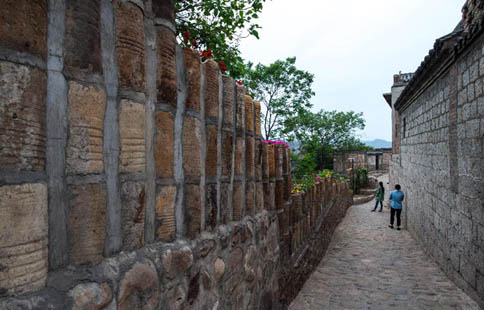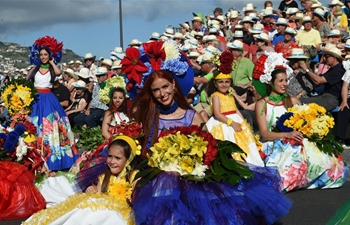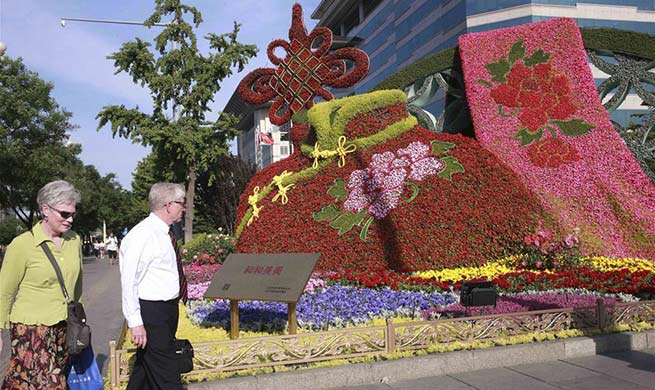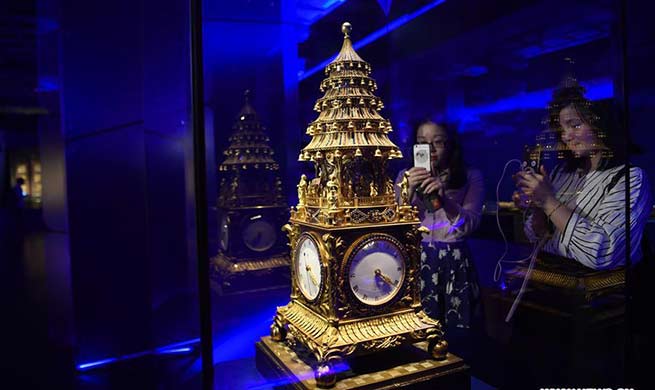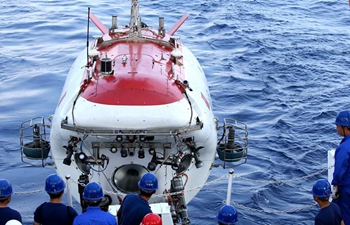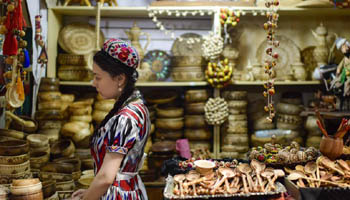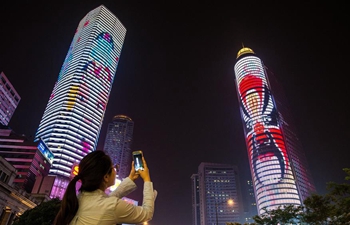MOSUL, Iraq, May 8 (Xinhua) -- Iraqi forces battling Islamic State (IS) militants on Monday pushed further into northern Mosul on the fifth day of a new push that initiated a new front in the northwestern edge of IS stronghold in the western side of Mosul, the Iraqi military said.
The army's 9th Armored Division and elite forces of the federal police, known as Rapid Response, freed the neighborhood of Harmat and raised the Iraqi flag over some of its buildings after heavy clashes against IS militants, the Iraqi Joint Operations Command (JOC) said in a statement.
The troops also recaptured Harmat's residential buildings after heavy clashes against IS militants who were holed up in the buildings, leaving at least 17 militants killed, Qasim Nazzal, commander of the 9th division, told Xinhua in the western side of Mosul.
Nazzal confirmed that the troops are now initiating a new push at the edge of the neighboring July 30 neighborhood, which is one of the main IS redoubts in the northern part of Mosul's western side.
Meanwhile, the federal police forces pushed toward the adjacent neighborhood of al-Iqtisadi and opened a new front in southern July 30 neighborhood amid heavy clashes with the extremist militants, Raid Shakir Jawdat, the commander of federal police, said in a statement.
Also in the day, the commandos of the Counter-Terrorism Service (CTS) made a significant progress in the industrial area of Wadi Ugab in northwestern Mosul and seized most of the vast area, putting the troops at the edge of the IS stronghold in Islah al-Ziraie neighborhood, the JOC said in a separate statement.
The CTS Commander Abdul Ghani al-Asadi told Xinhua that the troops fought fierce street-to-street battles against IS militants, killing at least 13 of them, including three suicide bombers, and destroyed two suicide car bombs.
"The CTS forces are also fighting on other fronts; they are fighting alongside the army and the federal police in the neighborhoods of Harmat, July 30 and Zanjily which is adjacent to the old city center," Asadi said.
Early on Thursday, the Iraqi army and Rapid Response special forces pushed on the new front from the northwestern edge of Mosul toward the areas of Mushairfah, Kanisah and Harmat in the northern part of the western side of the city.
The new push would help the special forces of the CTS and the interior ministry federal police, who are making slow progress in the southern part of Mosul's western side because of the stiff resistance of the militants in the densely-populated areas of the old city center, where roughly 400,000 residents are believed to still be trapped under IS rule.
The IS militants are now being surrounded by the troops in the northern part of Mosul's western side, which includes the old city center.
Captain Mahmoud, commander of a federal police company fighting IS militants inside the old city center, said the new push in the northwestern part of Mosul's western side has reduced the pressure on the security forces in the old city center.
Observers say the new push was designed to pull some of IS militants from the narrow streets of the densely-populated city center to fight them in less densely-populated neighborhoods with wide streets in northwestern Mosul, in order to reduce the civilian casualties in the city center.
The new push would enable the troops to advance deeper inside the city center, in particular toward the old areas around the historical al-Nuri Mosque in the middle of Mosul's old city center.
The mosque with its famous leaning minaret, which gave the city its nickname "al-Hadbaa" or "the hunchback," has a symbolic value, as it was where IS leader Abu Bakr al-Baghdadi declared the cross-border caliphate in large areas in Iraq and Syria in his sole public appearance in July 2014.
Late in January, Iraqi Prime Minister Haider al-Abadi, who is also the commander-in-chief of the armed forces, declared the liberation of Mosul's eastern side, or the left bank of Tigris, after over 100 days of fighting IS militants.
On February 19, Abadi announced the start of an offensive to drive extremist militants out of the western side of Mosul, locally known as the right bank of the Tigris River, which bisects the city.
However, the western part of Mosul, with its narrow streets and heavily populated neighborhoods, appears to be a bigger challenge to the Iraqi forces.
Mosul, 400 km north of the Iraqi capital Baghdad, has been under IS control since June 2014, when government forces abandoned their weapons and fled, enabling IS militants to take control of parts of Iraq's northern and western regions.




